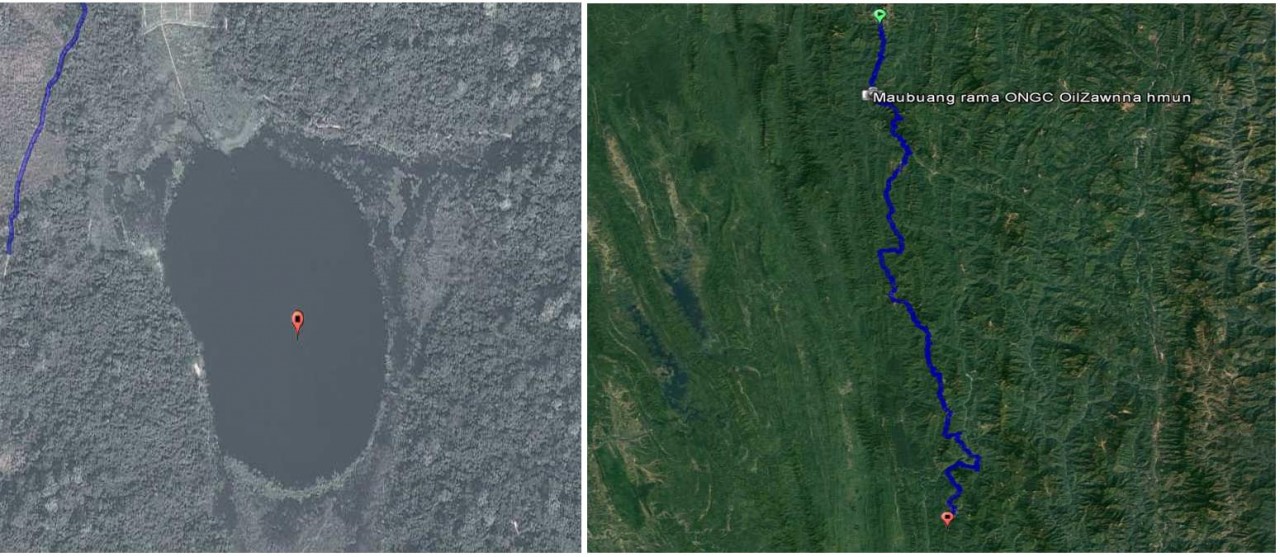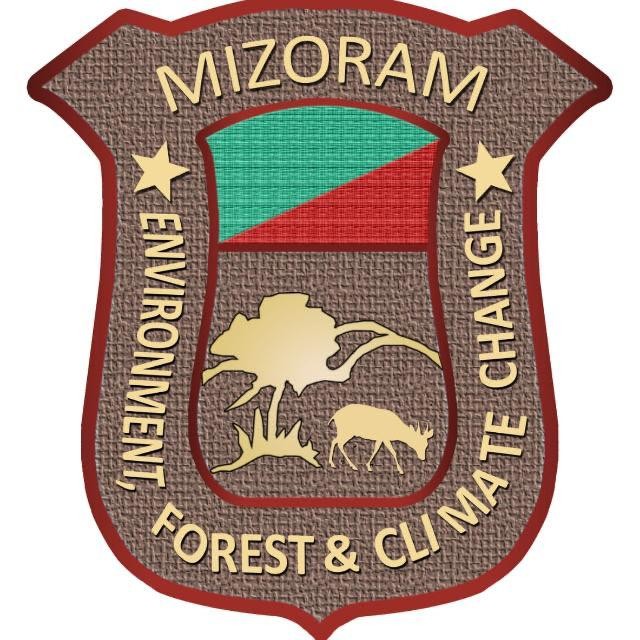PALAK LAKE
- Introduction: Palak lake is the largest lake in Mizoram and most famous landmark of Mara Autonomous District Council. The local people call it Pala Tipa. Surrounded by lush green forests and mountains, it is home to a range of animals, birds, amphibians and reptiles.
Palak Dil or Pala Tipo (Mara language for "swallowing lake") is located near Phura village in Saiha district. Its geographical location falls under the Indo-Burma biodiversity hotspot, and is therefore rich in animal and plant species. The lake is a major component of the Palak Wildlife Sanctuary and it supports the major biodiversity of the sanctuary.
- Origin myth and folklore
According to oral history Palak Dil is said to be formed around 800-1200 CE. It coincided with the period of westward migration of Mara people from Burma. The origin of Palak Dil is a well known folktale among Mizo people. According to Mara legend the location area was originally a big village called Hnychao. There were about 300 families. At the center of the village was a large rock, underneath of which was a cave inhabited by a giant serpent. Villagers soon noticed that children playing around the rock frequently disappeared. At night their livestock animals were missing too. The village hunters caught the serpent using a gigantic fishing pole, and using a goat (or dog in other version) as a bait. From this point there are two versions:
They killed the snake and the meat was distributed to all families. A widow with two children happened to get a share of the head. When she cooked it, the eyes were blinking and rolling, staring at her. Frightened, she threw the cooking pot into the street. When she looked out, their doorstep was being flooded and fled for life with her children. The pool rose to a lake submerging the entire habitation and drowning the rest of the villagers. The lake was eventually called Pala Tipo.
In an alternate version, when they caught the snake they could not completely haul out its body and cut it in the middle. The bottom half fell back into the cave with massive thunder. It created an upsurge of water from the cave, submerging the whole village. This became a permanent lake and was called Pala Tipo, literally meaning a "swallowing or submerging lake".
- Description of the site:
- Location: The Palak lake is located between 93052’50.00199” to 92055’30.84179”E Longitude and between 22010’ 44.22455” to 220 13’ 05.17914”N in the remote part of the Mara Autonomous Ditrict Council in the southern part of Mizoram near the border of Indo-Burma hotspots region.
Palak wetland is located at about 360 kms from Aizawl, the capital of Mizoram and about 97 km from Saiha. Palak wetland falls under the Phura Forests Range. The nearest village from the lake, Phura is about 6 km and the nearest metal road Haochao village is 53 kms from Phura. It can be reached by small/light vehicles only. Three villages such as Phura, Tongkalong, and Lawngban, are in close proximity. Phura is the main route for visitors.

Fig: Aizawl to palak lake guide map (Source: Google map)
- Area: The Palak wetland Reserve comprises of an area of 18.5 sq.km. The lake (water body) area is 1.5 sq km. It has two lake namely Tipo pino and Tipo Taw, the water level of these two lakes are drastically decreased in summer.
- Altitude: Altitude range from 274 m(above mean sea level) on the surface of the Palak Lake and 500m-589m (above mean sea level) at the Liapahlo hill ranges.
The Wetland area was declared as Reserved Area by the Mara District Council in 1984. The wetland is listed under National Wetland Conservation Programme as National Wetland.
- Flora and Fauna:
- Flora: Palak lake is bounded by tropical evergreen mixed with moist decisous forests. The flora in and around the Palak lake was reported by Lalramnghinglova et al (2006). The dominant and emergent species is Dipterocarpus retusus. The highly valued timber yielding species include Dipterocuspus turbinatus, Terminalia myriocarpus, Gmelina arborea; ethno-medicinal plants include Bombax insigne, Carralia brachiata, Dendroxnide sinuata, Anacolosa cresipes, Bacauria sapida, Psychotria calacarpa and Buettneria aspera, Pasderia foetida, Mikania micrantha among climbers. Woody forests are interspersed with Bamboo brakes (Melocanna spp.); the lake is covered on the edges by the hydrophyte Trapanutans. The swampy areas within the forests have a profusion of herbaceous vegetation as well as grasses. Various species of beautiful ground and epiphytic orchids are also found.
The vegetation could be classified as Chchar Tropical Evergreen (1B/C3) and Chachar Tropical Semi Evergreen (2b/c2) Forest types according to Champion and Seth. Recent classification by Wikramanayake et al, has identified it as having primarily Evergreen and Semi-Evergreen type of vegetation.
- Fauna: The Palak lake wetland conservation area is extremely rich in faunal life. Recent surveys have found more than 42 species of mammals, 120 species of birds and 10 species of amphibians and 22 species of reptiles. The area is also rich in butterflies with 38 species being reported so far.
The many low-lying marshy areas within the wetland provide excellent habitat for many herbovores such as Sambar deer (Cervus unicolor), wild pig (Sus scrofa), Barking deer(Muntiacus muntjak), and elephant (Elephas maximus). There are various species of primates such as highly endangered Hoolock gibbon(Hoolock hoolock hoolock) and Phayre’s leaf monkey(Trachypithecus obscurus phayrei).
Robertson, a Scottish naturalist reported the avifauna of Palak lake in 2006 (Robertson, 2006). The list of birds include Buceros bicornis, Anthracoceros albitrostis, A.malabaricus, Garullex leucoluphus, Polyplectron bicalcaratum, Trachybaptus ruficollis, Gallus gallus, Ardeo grayii, Porphrycio porphyrio, Upupa epops. Migratory birds also used to visit the lakes; over 70 species of birds were recorded from the area during a three day IBA survey (Birand and Pawar 2001) while the presence of 136 species of avifauna and 42 species of mammals were recorded (Roy et al. 2007).


















